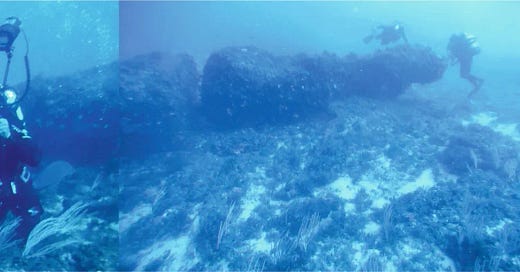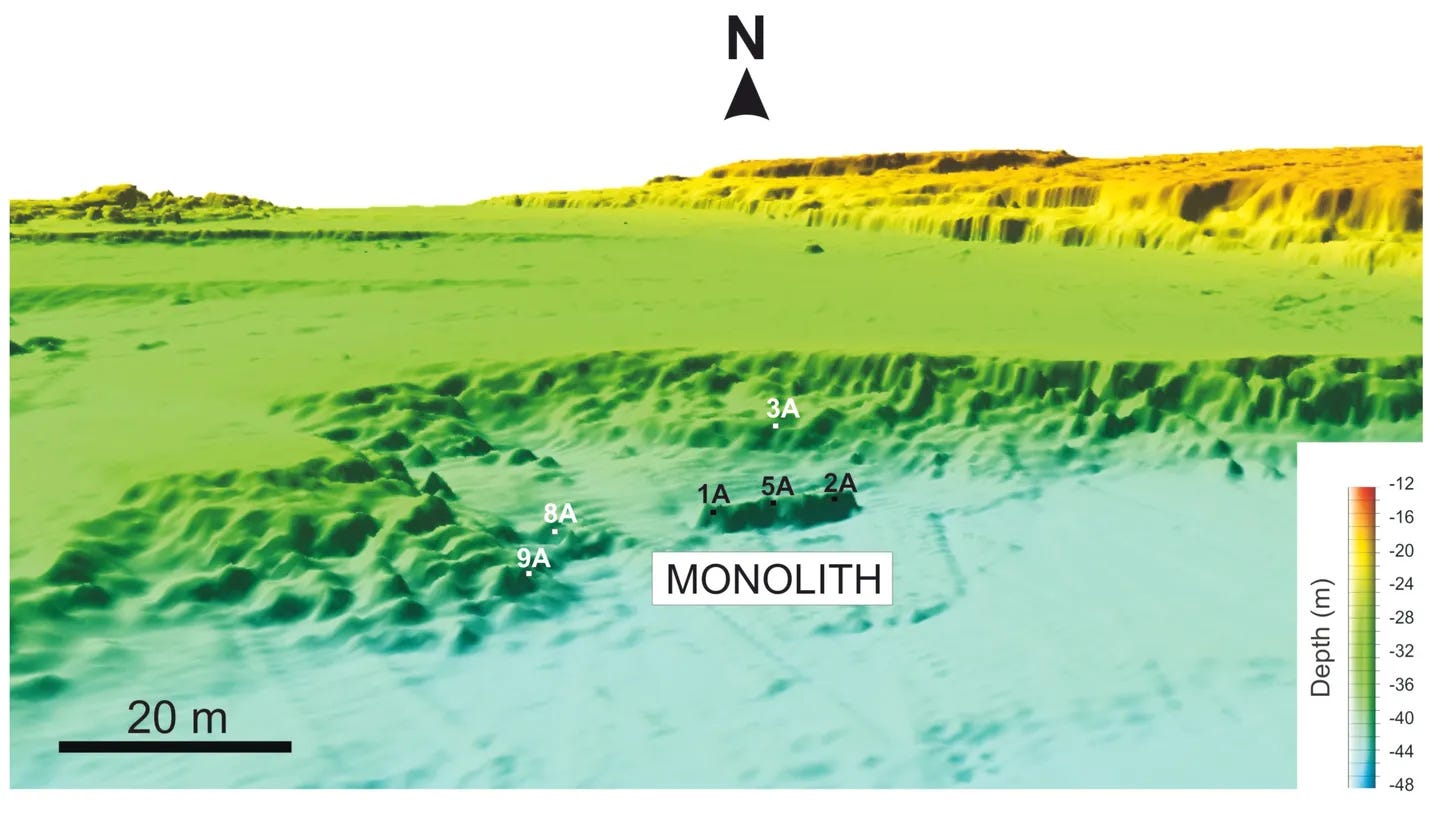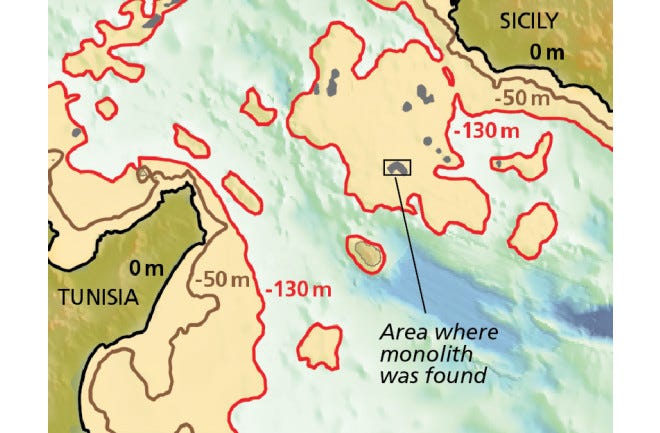A mysterious object lies at the bottom of the Strait of Siciliy between modern day Italy and Tunisia. It’s a massive 12 meter long rock split in two, with both halves of the rock weighing an estimated 15 tonnes. This massive mystery brings about certain questions, namely what is it, where did it come from, and who made it? Let’s find out.
The Pantelleria Vecchia Bank Megalith, or the underwater megalith as I shall refer to it for brevity from now on is the name given to the massive stone lying 40 meters below the current sea levels of the Mediterranean Sea. This underwater megalith was only recently discovered from the perspective of archeologists in 2015, so it has not been thoroughly studied, but has been photographed and sampled only for it to become the center of several large questions.

During the last ice age the sea levels were much lower than they currently are today. Many coastlines have changed, some greatly, some only slightly as the sea has encroached on the land with its rising tides. This large stone now sits on an underwater bank which used to be part of a peninsula attached to Sicily, from which it is now over 60 kilometers south of its modern day coastline.
The last time this underwater megalith saw the light of day unobscured by the waters of the Mediterranean has been estimated to be approximately 9,000-10,000 years ago. Composed of a type of limestone called sedimentary calcirudite, the stone has a consideral amount of shell fragments which compose its weight. Radiocarbon dating of these shell fragments has yielded an estimated age of about 40,000 years. All of this is captured within the larger image that this stone sits on top a sedimentary layer of the ocean floor with an approximate age of 10,000,000 years. With this information it can be gathered that the stone is from an area along the coast, from which it gathered seashells, but was then moved to its current location where it now rests.
Not merely a natural stone, this object has a regular shape unlike any surrounding objects, and most interestingly three large holes of approximately the same size of 60 centimeters in diameter, one of which runs the length of the entire megalith. The hole is now partially filled with barnacles and other types of crustaceans, but the viewer is still able to peer through the underwater megalith from one end to the other. It has yet to be determined how these three holes had been created, but this something that is unknown through history, as the Egyptians were well known for drilling out sections of much harder stones such as granite with hand powered tube drills. Otherwise, the purpose behind and crafting methods of these holes is wholly unknown.
How does this object compare to other megaliths of Europe and the Mediterranean? Well, the largest stone at Stone Henge, a famous megalithic site of the British Isles dating to around 5,000-4,500 years ago is approximately 30 tonnes. The oldest known Megalithic sites of the Fertile Crescent such as the world famous Göbekli Tepe from 11,500-10,000 years ago weigh approximately 50 tonnes. So this underwater megalith is well within the realm of possibilities, existing both after the oldest known megaliths, and within a believable size and weight of comparable megaliths. Yet the questions remain, where did this megalith come from and who made it?
To these questions of the ultimate curiosities only time will tell, along with greater research and evidence into the matter. The fact is that the spread of megalithic culture throughout Europe was quite slow, and which ever settlements existed at the time of this megaliths creation would be well submerged under not only water but sediment on the shallow Sicilian Strait. This is clear evidence of a gap in our understanding of our ancient past, and one that should be explored by examining the surrounding seabed. I have a suspicion that this megalith may provide us with the first clue of a broader megalithic culture around the Mediterranean Sea now lost to history, but that shall only be revealed with future searchs.
Many mysteries of our recent and ancient past exist. We shall never know them all, nor should anyone expect as much of such things. However, I would speculate that the resources of archeologists would be well spent searching and excavating the sea floor of several key points around the Mediterranean Sea to reveal to us what has long been hidden. What could be found could change our understanding of history forever. As always brothers, I am here with you in the abyss.








